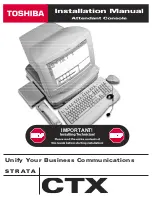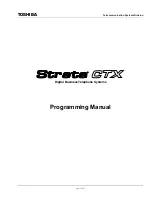
SDM16i Product Manual
and often sent to foldback speakers, and used to send separate mix and crossover EQ setting
to subwoofers. Select Pre or Post fader and apply parametric EQ and compression/limiting for
each AUX channel.
3. Main Outputs - XLR and ¼” TRS
Featuring balanced line level XLR and TRS output connection options, both outputting the
main left and right channel signal. Connect these to your FOH (front of house), full range
speakers. Use parametric EQ to tweak the final output to suit the room, and add hard
compression as a form of a limiter to squash peaking signals.
4. Main Output Volume Control
Set the main output to the unity setting at 1 o’clock, or tweak to suit your speaker system or
venue. Also maintains a hands-on option to control the main output if required.
5. Headphone Amplifier and Volume Control
Connect any headphones into the headphone amplifier ¼” TRS output to monitor the main
output, or change settings to monitor Solo mode selected channels and even FX wet signals so
you can get than reverb setting perfect. Utilising Solo functionality, the headphone channel
can also be used as an additional AUX output, but be mindful to setup the headphone output
as to not overload a line level input (i.e. usually a 2 o’clock setting is enough).
6. LED Meter Strip
Clearly lit LED lights flash to indicate signal level for the main output. With LED 11 frequency
levels going up to +10dB. Will display the same as the main output within the software.
7. Wireless and Wired Connectivity
Flick between using the in-built W-Fi hotspot or use an Ethernet cable to connect to an
external router, existing network or seperate hotspot device. The plug and play ability of the
Wi-Fi hotspot, with reliable range of 20m is great for on stage performers and small venues.
Larger venues and live mixing engineers should consider connecting to existing networks or
network extenders with a wider Wi-Fi range. A device connected to a router via ethernet also
gives a completely wired connection that eliminates any potential for any software dropouts.
8. USB Port for Playback and Stereo Recording
A USB stick or flash drive can be connected to either playback music into the individual player
channel of the mixer, or record the main left and right signal from the mixer. Also very useful
when mixing yourself as a performer, as you can for example record a take of verse and then
move into the audience area and playback the recording to hear the mix and even make
EQ/compression adjustments in the player channel to tweak the sound live, which you can
then replicate on the appropriate channels.
9. SPDIF Digital Audio Input and Output
Interface with any digital device that has SPDIF input/outputs. The SPDIF input has its only
channel within the mixer software, again with EQ, compressor setting options. The SPDIF
3




































